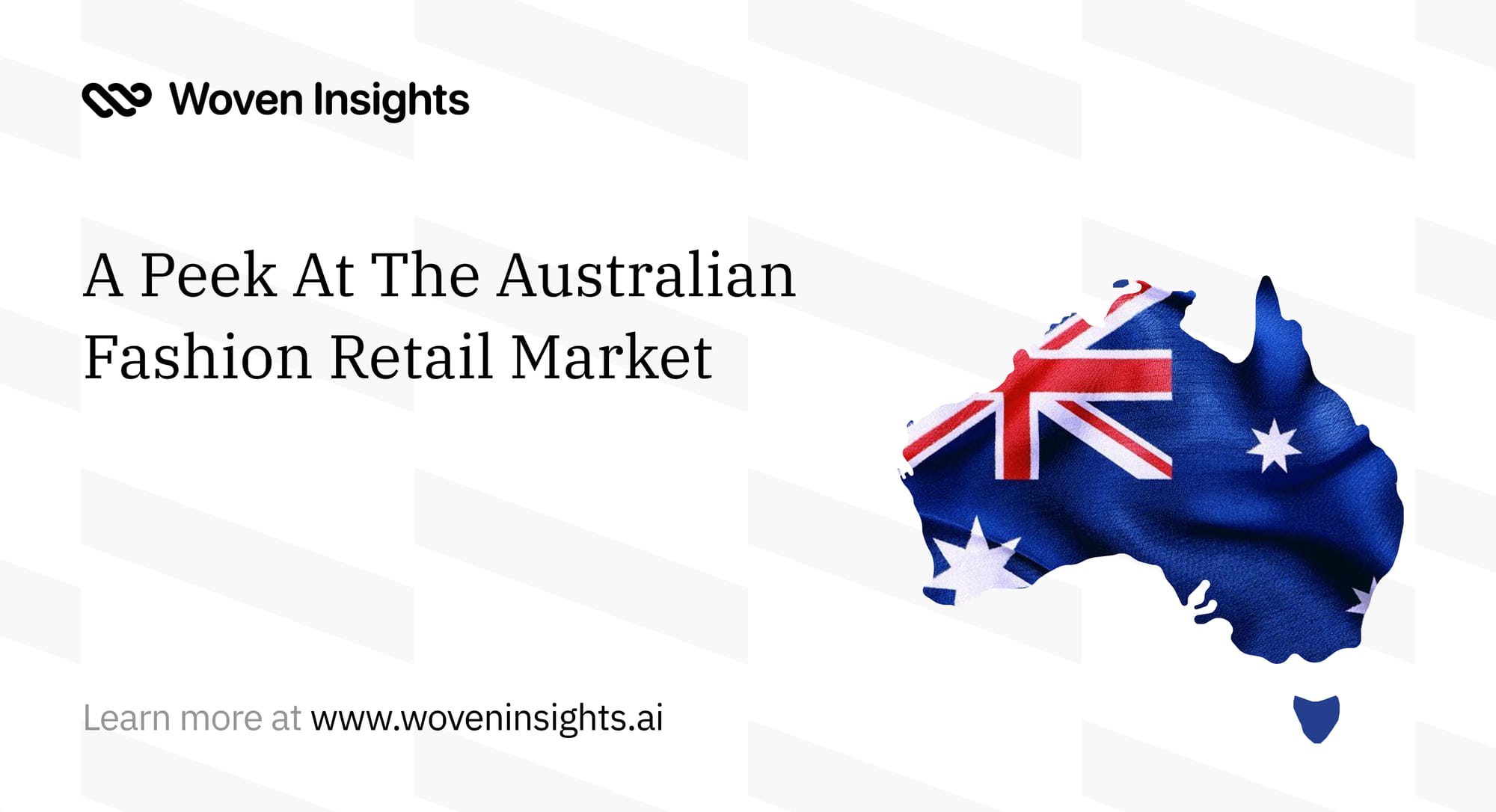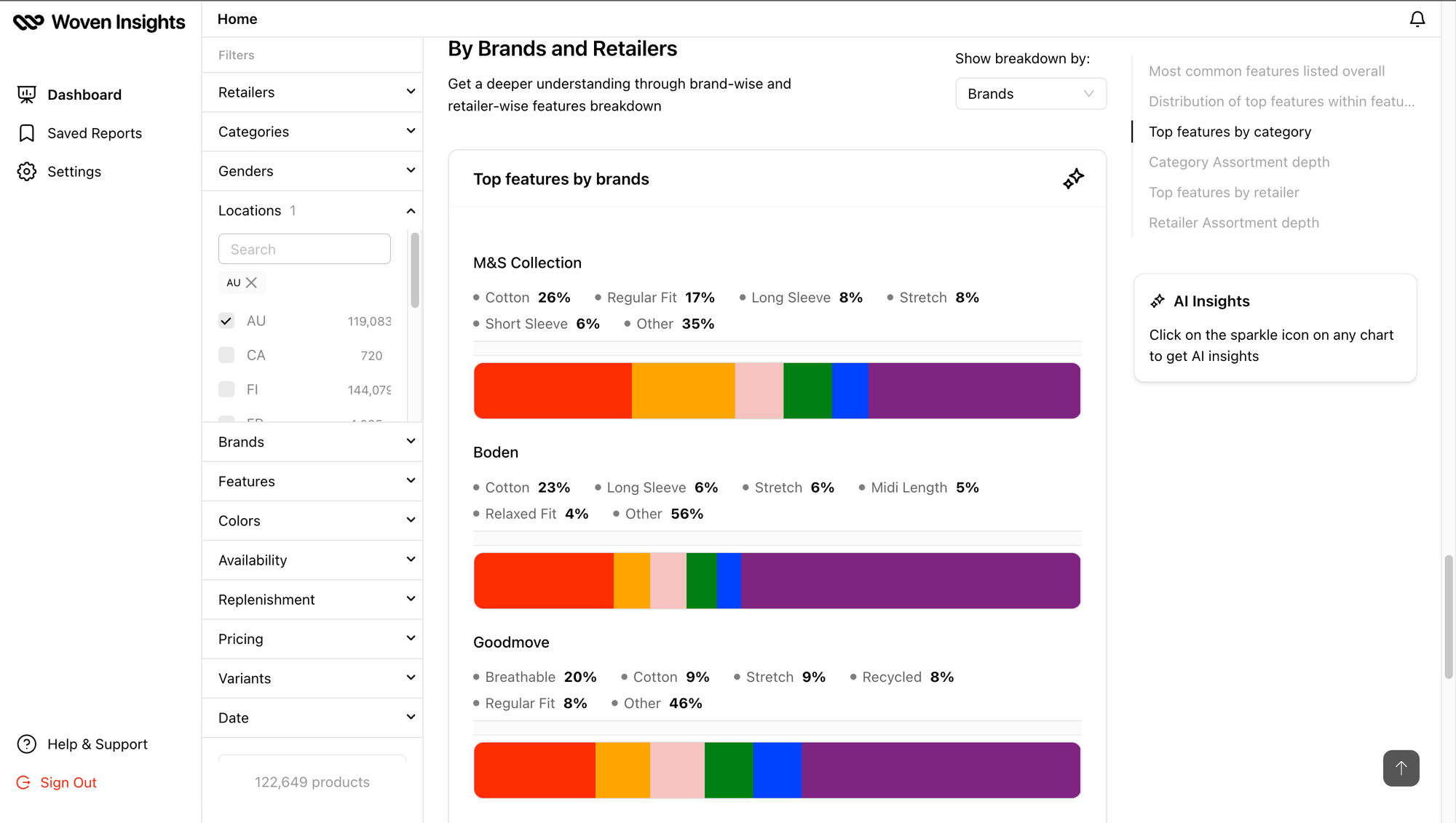A Peek At The Australian Fashion Retail Market
This article provides a a breakdown of the Product Assortment Depth of some of the leading fashion brands in Australia.

As we approach the final quarter of 2024, the Australian fashion landscape continues to evolve, presenting both challenges and opportunities for industry players. This article provides insights into the trending features of three major global brands making waves in the Australian market: M&S Collection, Boden, and Goodmove.
Before we dive into the specifics, it's worth noting how this data was collected. Woven Insights, a leader in fashion business intelligence, utilizes advanced algorithms and data scraping techniques to analyze market trends and product performance through its Fashion Market Insights and Fashion Consumer Insights modules.
How To Understand The Assortment Of Fashion Products In The Market
This approach provides a real-time view of what's trending in the market, offering fashion businesses a competitive edge in product development, retail and marketing strategies.
Here's a breakdown of the Feature Assortment depth of some of the leading fashion brands in the Australia:
M&S Collection: The Comfort Revolution
M&S Collection's data reveals a strong lean towards comfort and versatility:
- Cotton dominates at 26%, reflecting the enduring appeal of natural, breathable fabrics.
- Regular fit garments (17%) suggest a shift away from more restrictive styles.
- Long sleeve and short sleeve options (8% and 6% respectively) cater to Australia's variable climate.
- Stretch fabrics (8%) underscore the importance of comfort and flexibility.
Boden: Versatility Meets Style
Boden's trending features paint a picture of a brand balancing comfort with fashion-forward choices:
- Cotton remains strong at 23%.
- Long sleeves (6%) and stretch fabrics (6%) mirror the comfort trend seen in M&S.
- Midi lengths (5%) and relaxed fits (4%) suggest a focus on versatile, trans-seasonal pieces.
Goodmove: Performance and Sustainability Lead the Way
Goodmove's data reflects a brand at the intersection of athleticism and eco-consciousness:
- Breathable fabrics lead at 20%, catering to Australia's active, outdoor lifestyle.
- Recycled materials (8%) highlight the growing importance of sustainability.
- Cotton (9%), stretch (9%), and regular fit (8%) features round out a performance-oriented profile.

What This Means for Fashion Businesses
- Product Development: These insights can guide designers and product developers in creating lines that resonate with current consumer preferences. The emphasis on comfort, versatility, and performance fabrics across all three brands suggests these are key areas to focus on.
- Marketing Strategies: Understanding these trends allows marketers to highlight the features that are most likely to appeal to Australian consumers. For instance, emphasizing the breathability of fabrics or the versatility of designs in marketing campaigns.
- Inventory Management: By knowing which features are trending, businesses can make more informed decisions about stock levels and product mix, potentially reducing overstock issues and improving turnover.
- Competitive Positioning: This data allows businesses to benchmark their offerings against major players in the market and identify gaps or opportunities for differentiation.
- Sustainability Initiatives: The presence of recycled materials in Goodmove's trending features suggests a growing market for sustainable fashion, which businesses might consider incorporating into their own lines.
As we move into the final months of 2024, fashion businesses would do well to leverage these kinds of data-driven insights. In an industry as fast-paced and competitive as fashion, having this level of market intelligence can make the difference between leading the pack and falling behind.
The $21 billion Australian fashion market, with its unique blend of global influences and local preferences, presents a complex landscape for brands to navigate. But with tools like those provided by Woven Insights, businesses can turn this complexity into opportunity, crafting products that resonate with consumers and driving growth in the fashion market.
About Woven Insights
Woven Insights is a comprehensive market analytics solution that provides fashion brands with real-time access to retail market and consumer insights, sourced from over 70 million real shoppers and 20 million analyzed fashion products. Our platform helps brands track market trends, assess competitor performance, and refine product strategies with precision.
Woven Insights provides you with all the actionable data you need to create fashion products that are truly market-ready and consumer-aligned.
Click on the Book a demo button below to get started today.
